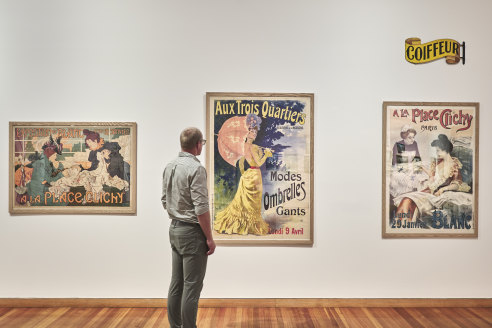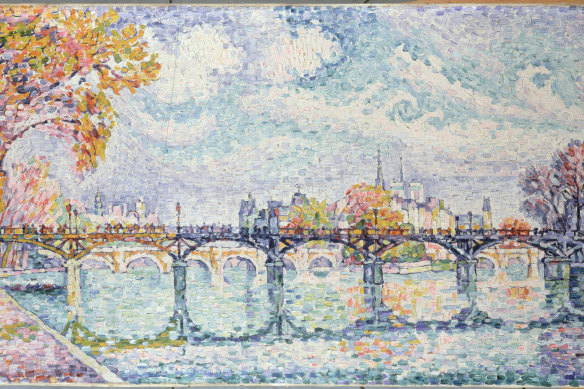
Of all the Parisian museums and galleries, the Musée Carnavalet is probably not a first-tier attraction, which is a distinct advantage from the visitor’s perspective. It means one is unlikely to encounter the hordes of selfie addicts that swarm around the Mona Lisa in the Louvre, or Van Gogh’s Self-portrait in the Musée d’Orsay.
The Carnavalet is not a “masterpiece” collection, but a museum dedicated to the history of Paris. It occupies a suitably historic site in the Marais, combining two large, 16th century mansions. It was the former home of Madame de Sévigné (1626-96), one of the great French women of letters – quite literally, for she is known for her letters to her daughter, first published in 1725, and never subsequently out of print.

Bendigo Art Gallery’s Paris exhibition is a collaboration with the Musee Carnavalet.Credit: Leon Schoots
Madame de Sévigné is but one of the characters you’ll meet in the Carnavalet, in a narrative that begins in the pre-historic era and continues to the present. We travel through Roman times, the Middle Ages, the Ancien Régime, the Revolutionary and Napoleonic eras, the Second Empire, the Third Republic, and on to the World Wars of the 20th century. The great French kings, from Henri IV, François I, and Louis XIV, are well documented, along with the unfortunate Louis XVI and his queen, Marie Antoinette. The philosophers of the Enlightenment are present, followed by the turmoil of the French Revolution with its larger-than-life personalities. Inevitably, there’s a huge amount of material on Napoleon Bonaparte.
Among the most fascinating periods is the mid-19th century when Napoleon III tasked Baron Haussmann with a complete makeover of the city. One of Haussmann’s ideas was to create the Musée Carnavalet on its present site, where it opened in 1880.
What’s best about the Carnavalet is that the more French history you absorb, the more you get out of every visit. A little knowledge is fleshed out by a voluminous collection of images and objects. If you don’t know much about the subject, there is no better place to start. It’s a refreshingly old-fashioned museum that relies on material culture to tell a story, with less of those ubiquitous audio-visual distractions that make every contemporary museum seem identical. With more than 620,000 items in the permanent collection, there’s no need to pad out the presentations.
And so, when the Bendigo Art Gallery – the most enterprising regional gallery in Australia – started negotiating for an exhibition from the Carnavalet, there was no shortage of possibilities. The two museums decided, sensibly enough, to confine the show to the years 1880-1925, beginning a decade after the disastrous Franco-Prussian War, when prosperity had returned, and finishing in the year of the famous Art Deco exhibition. Within this span, Paris saw Impressionism evolve from a despised avant-garde tendency to the most collectable art in the world. It was a boom time for the French economy and culture, incorporating that era we know as the Belle Èpoque, which came to a crashing halt in 1914.

Le Pont des Arts, by Paul Signac, 1928.Credit: Musee Carnavalet
The curators of the show, both French and Australian, have chosen to accentuate the “gay Paree” angle and not get entangled in events such as the Great War, which would require a show in its own right. The exhibition is divided into seven main sections: Market Town Show, Parisian Public Gardens, The Seine, Universal Exhibitions and the Eiffel Tower, Bohemian Life in Montmartre, Musée Carnavalet, and The Champs-Élysées.
Within each section there is a cluster of paintings, posters, costumes, sculptures, jewellery, objet d’arts, vintage newsreels, and even menus. The eye-catching items in the first room are two large, gilded snails, which once graced the front of a shop in the 1st arrondisement. There are also shoes, hats, advertising posters for department stores, and street decorations used to identify other kinds of merchant.









 Add Category
Add Category